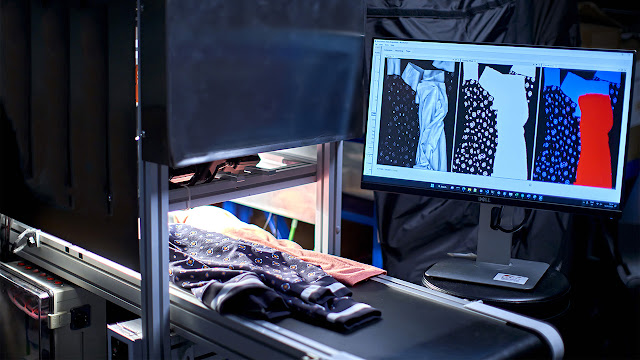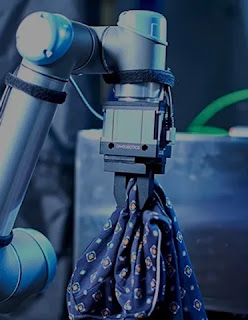Revolutionizing Textile Recycling- The Smart Garment Sorting System

In today's world, where environmental sustainability is becoming increasingly vital, innovations like the Smart Garment Sorting System are paving the way for a greener future. But what exactly is this system, and how does it revolutionize the way we handle post-consumer textile waste?
Imagine a bustling textile recycling station, where heaps of post-consumer garments await their fate. This is where the Smart Garment Sorting System comes into play. It's like a superhero for the garment recycling industry, armed with artificial intelligence and advanced imaging techniques. But let's break it down into simpler terms. At its core, this system is all about efficient management. It's like having a super-smart assistant that can quickly analyze garments as they come in. First up, it identifies the type of garment – whether it's a shirt, a pair of jeans, or a dress. Then, it dives deeper to figure out what it's made of and how it's put together. This is where things get really interesting. The system uses something called hyperspectral spectroscopy. Now, that might sound like a mouthful, but all it means is that it can analyze the spectrum of light reflected by the garment to gather detailed information about its composition and structure. Think of it as a garment's fingerprint – unique and full of clues.

Now, let's talk about how it actually works in practice. Picture this: a pile of post-consumer garments is fed into the system. With lightning speed, it scans each garment, analyzing its visible and hyperspectral spectrum. In a matter of seconds, it categorizes the garment based on type, material, and fabric construction.
But here's where the magic happens – the system doesn't stop there. It's not just about identifying garments; it's about making informed decisions. It provides valuable data to operators, helping them decide whether a garment is suitable for recycling and what approach should be taken.
The whole process is seamless, thanks to the interconnected classification modules. These modules work together like a well-oiled machine, ensuring accuracy and consistency every step of the way. And with automated devices lending a hand, the need for manual intervention is greatly reduced.
Flexibility is key with this system. It can be tailored to fit the needs of different operators. Whether it's adjusting the order of steps or customizing the garment recognition database, the system can adapt to suit specific requirements. Now, let's talk about why this matters. With more and more fashion brands turning to recycled materials, the Smart Garment Sorting System couldn't have come at a better time. It fills a crucial technological gap, making garment recycling more accessible and sustainable.
By reducing the demand for virgin fibers and diverting post-consumer garments from landfills, this system is helping to create a more circular economy. It's a win-win for both the environment and the fashion industry.
But perhaps the most exciting part is the technological breakthrough it represents. While near-infrared (NIR) technology has been used in waste sorting, its application in post-consumer garment sorting has been limited. This system changes that. With its advanced AI algorithms and proprietary garment database, it's like the system has been trained to speak the language of garments. It can recognize a wide variety of garments, making the sorting process faster and more efficient.
In a world where textile waste is a growing concern, innovations like the Smart Garment Sorting System offer hope for a more sustainable future. By harnessing the power of artificial intelligence and cutting-edge technology, we can transform the way we recycle garments, one piece at a time.
Innovate with Kamlatech